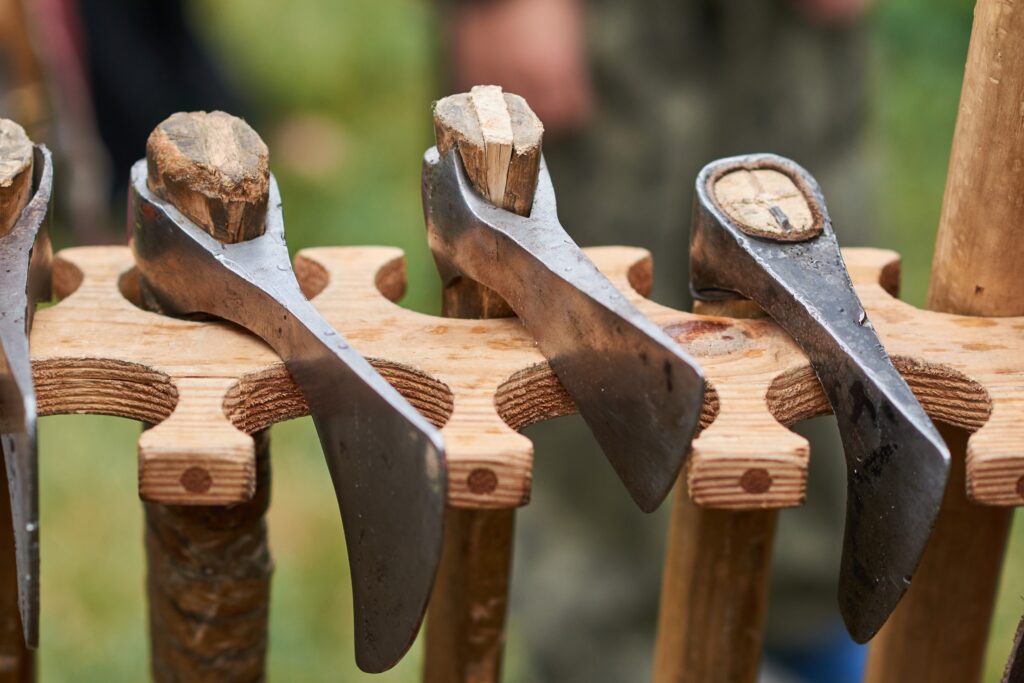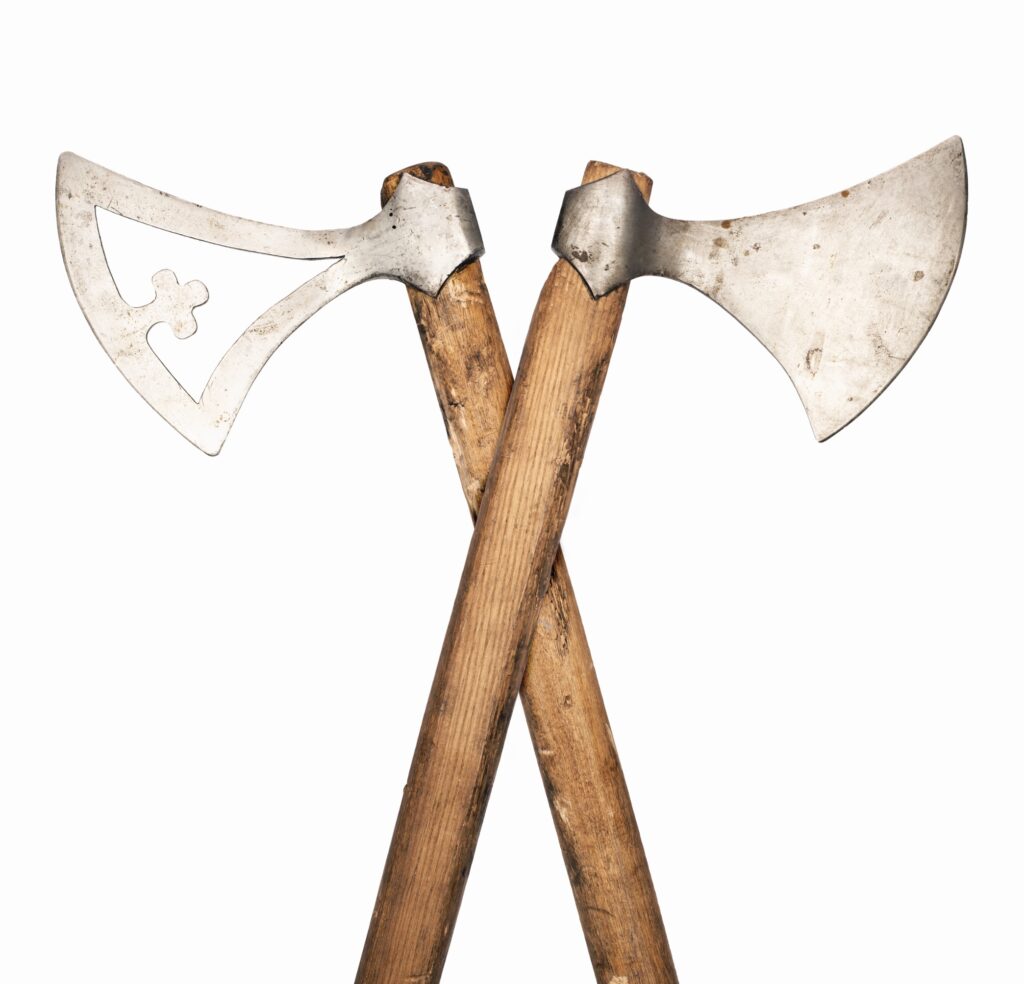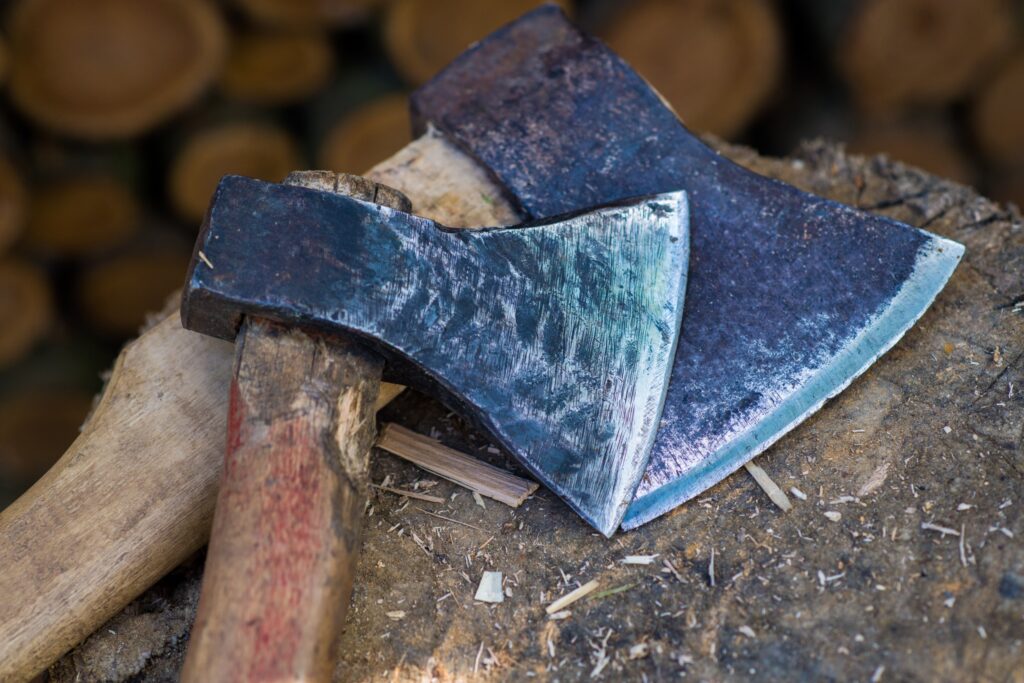Axe-throwing, once a niche activity, has surged in popularity, attracting enthusiasts eager to embrace this primal and skillful sport. Central to a successful and enjoyable axe-throwing experience is selecting the right axe that complements your throwing style. This comprehensive guide navigates the intricate world of axe selection, helping you understand the key considerations and find the perfect axe for your throwing prowess.

Understanding Axe Anatomy: A Brief Overview
Before delving into the selection process, let’s familiarize ourselves with the basic components of an axe:
- Head: The metal portion of the axe that includes the blade and the bit (the cutting edge).
- Bit: The sharpened edge of the axe blade, the part that makes contact with the target.
- Cheek: The sides of the axe head that provide weight and stability.
- Haft or Handle: The wooden (or sometimes metal) portion of the axe that you grip and use for throwing.
- Poll or Butt: The opposite end of the bit, often used for hammering or striking.
Key Considerations for Choosing the Right Axe
Axe Design
Single-bit axes have one cutting edge, while double-bit axes have two. Beginners often start with a single-bit axe for simplicity and safety. Double-bit axes offer versatility but require more skill to control.
Weight
Look for a well-balanced axe. The weight should be evenly distributed between the head and the handle. This promotes accuracy and control during throws. Axe weight is subjective and depends on your strength and throwing style. Experiment with different weights to find what feels comfortable for you.
Handle Length
Most throwing axes have handles ranging from 12 to 18 inches. The standard length for many competitions is around 14 inches. Shorter handles may be more manageable for beginners. Some throwers prefer longer handles for added leverage and control, especially in outdoor settings.
Material
Wooden Handles: Traditional and favored by many, wooden handles provide a classic feel. Hickory is a popular choice due to its strength and flexibility.
Fiberglass or Composite Handles: These materials offer durability and consistency. They are less prone to breaking but may lack the traditional feel of wood.
Blade Sharpness
Throwing axes don’t require razor-sharp edges. A moderately sharp blade is sufficient for good stick and ease of removal from the target. Consider axes with blades that are easy to sharpen, ensuring longevity and optimal performance.
Grip Style
A straight handle provides a classic feel and is suitable for both beginners and experienced throwers. Some throwers prefer a slightly curved handle for a comfortable grip and a natural feel during the throw.
Price Range
Suitable for beginners, entry-level axes are cost-effective and provide a good introduction to the sport. Premium axes are designed for enthusiasts and professionals and may come with additional features and materials, often at a higher cost.

What Is the Intended Use of Your Axe?
If you plan to compete, check the regulations for the specific requirements of competition axes. These often dictate dimensions, weight, and other specifications. For casual or backyard throwing, you have more flexibility in choosing an axe that aligns with your preferences.
Styles of Axe-Throwing and Matching Axes:
No-Spin Throwing:
- Axe Type: Single-bit axes with a moderate weight are suitable for no-spin throwing.
- Grip: Grip the axe near the bottom of the handle and throw with a controlled, linear motion.
Spin Throwing:
- Axe Type: Both single-bit and double-bit axes can be used for spin throwing.
- Grip: Hold the axe higher on the handle and throw with a spin, allowing the axe to rotate in the air.
Tomahawk Throwing:
- Axe Type: Tomahawks, which are a type of single-bit axe, are specifically designed for this style.
- Grip: The grip is crucial; it involves a wrist-over-wrist technique for optimal control and rotation.
Maintenance Tips for Your Throwing Axe:
Periodically check the axe head, handle, and overall condition for any signs of wear, damage, or loose components. Handle care is important, so keep wooden handles dry to prevent swelling and rot. Sanding and oiling the handle periodically can enhance its lifespan. Maintain a consistent edge on the blade for optimal performance. Regularly check for nicks or damage and address them promptly. Finally, store your throwing axe in a cool, dry place. Avoid leaving it outdoors, where exposure to the elements can accelerate wear.

Your Perfect Throwing Companion
Selecting the right axe for your throwing style is a personalized journey that combines knowledge, experimentation, and a bit of personal preference. Whether you’re drawn to the classic feel of a wooden-handled axe or the durability of modern materials, understanding the key considerations and styles of throwing will guide you toward the perfect throwing companion. So, grip that handle, line up your shot, and let the satisfying thud of your axe finding its mark be the reward for a well-informed choice. Visit our Propel Axe blog for more axe-throwing tips and tricks.


 720-330-9755
720-330-9755
